WAR GRAVE
FRANK MAYES (grave 105)
FLYING OFFICER
97 SQUADRON
ABOUT MY LIFE
Born: 18th February 1915
Died: 13th November 1942
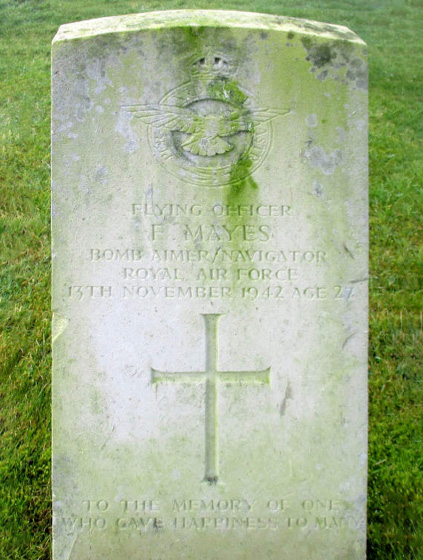
I was the son of Thomas and Fanny Mayes and in 1939, I married Cora Beryl Mayes and lived with her at 27 The Park, Kingswood, Bristol. I was born in South Farnborough, Hampshire and before the war I had been an assurance agent.
My family left the following epitaph to me: To the memory of one who gave happiness to many.

MY AIRCRAFT
The Avro Lancaster was a development of the ill-fated Avro Manchester. The twin engine Manchester had been an unmitigated disaster, under-powered and crash prone. Undeterred, the designer Roy Chadwick increased the wingspan and added two more engines. From a disastrous start, the most legendary bomber of all time was born.
From 1942 onwards the Lancaster, together with the Handley Page Halifax, provided the backbone of bomber command. Equipped with four Rolls Royce Merlin engines, the same engine which powered the equally legendary Spitfire, the Lancaster could deliver 18,000 lbs of bombs to targets up to 2500miles away. Later versions of the Lancaster carried even bigger specialist bombs designed by Barnes Wallis of Dambusters fame.
During the Second World War, The Lancaster conducted a total of 156,000 sorties and dropped 608,612 tons (618,378,000 kg) of bombs. A total of 7377 Lancasters were built, of which 3736 were lost to enemy action and accidents.
Today, only 17 complete Lancasters survive, with just two flying examples. The Battle of Britain Memorial Flight’s PA474 and the Canadian Warplane Heritage’s FM213.
Crew: 7
Span: 102 ft
Length: 69 ft 6 in (tail up)
Height: 20 ft 6 in (tail up)
Empty weight: 37,000 lbs
Loaded weight: 65,000 lbs
Engine: 4 x Rolls-Royce Merlin 24 V-12 engines
Engine power: 1,620 hp at 3,000 rpm (1,208 kW)
Maximum speed: 275 mph
Range: 2,530 miles with 7,000 lbs of bombs
Ceiling: 22,000 ft
8 x .303-caliber machine guns
18,000 lbs of bombs
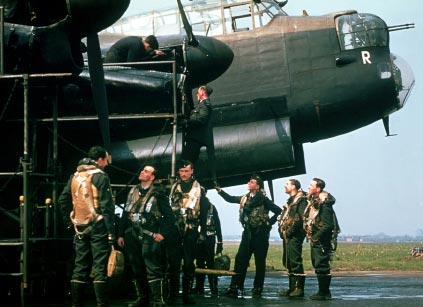
MY ROLE
I was the Navigator and Bomb Aimer of this new crew, we had just completed our training and we were completing our operational training before going on our first mission.

A Lancaster Navigator.
MY SQUADRON
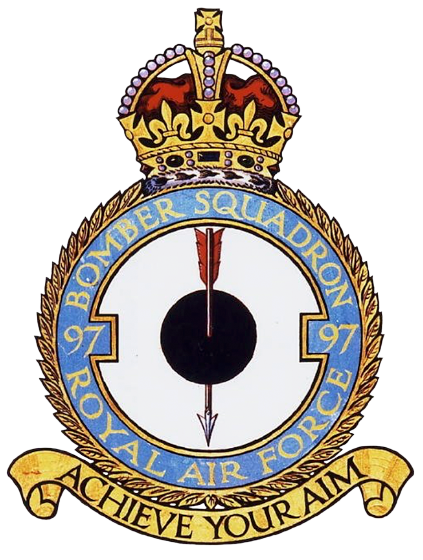
Motto: Achieve your aim
97 Squadron was formed at RAF Waddington on 1st December 1917 as a training squadron. As the First World War was drawing to a close, the squadron re-equipped with the Handley Page o/400, and deployed to Xaffer-Villiers in France as a night-bombing squadron, flying their first operational sortie 19th August 1918.
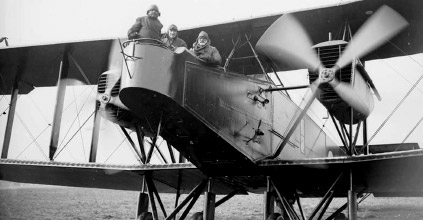
Handley Page O/400.
Following the war, the squadron was sent to India, flying the Airco DH10 Amiens before being disbanded in 1920. The squadron reformed on 16th September 1935, flying the Handley Page Heyford, an aircraft not too dissimilar to the O/400 they had flown nearly 20 years earlier.
Just before World War 2 began, the squadron re-equipped with the Armstrong Whitworth Whitley, an aircraft that could at least take the fight to Germany. The squadron had a very brief association with the ill-fated Avro Manchester, lasting less than a month, but by January 1942 they were converting to the Lancaster at RAF Woodhall Spa.
Following the war, 97 squadron remained operational flying the development of the Lancaster, the Avro Lincoln. On 1st December 1959, they took on a completely new role, losing their aircraft in favour of the Thor ballistic nuclear missile. In 1962, they regained their aircraft and flew the Vickers Varsity, English Electric Canberra and Handley Page Hastings until their final disbandment on 2nd January 1967.
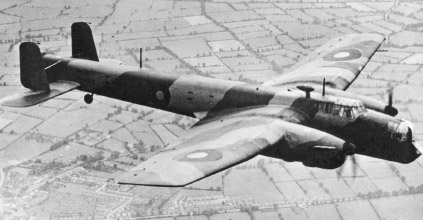
Armstrong Whitworth Whitley.
THE ACCIDENT
Sergeant Mercer was the pilot of Lancaster R5569, and new to the aircraft having only twenty hours on type, eight of which were at night. Like all new crews, before we could fly the Lancaster operationally we were required to fly a number of ‘Bullseye’ training exercises. A ‘Bullseye’ exercise was a mock bombing raid on a distant town in the UK. The exercise tested night navigation skills and the teamwork of our newly formed crew. Obviously no bombs were carried, but searchlight crews would try to find us in as realistic a way as they could without actually firing the anti-aircraft guns.
On 13th November our crew were tasked to carry out a ‘Bullseye’ mission. Having completed the exercise just before 11 pm, we were returning to Scampton to land. Having misjudged the approach Sergeant Mercer elected to apply power and go around for another attempt. However, inexperience took its toll once again. He raised the flaps too early and compounded the problem by entering a right hand turn. As a result the aircraft stalled and crashed at 10:50 pm at Brattleby, close to the airfield boundary.
Six of the seven crew on board died instantly, four of whom lie buried at Scampton. Sergeant Collings survived the initial impact, but died the next day at the RAF hospital at Bracebridge.
CASUALTIES – 13TH NOVEMBER 1942
Sergeant Keith Paterson Mercer (Pilot) RCAF (Buried Scampton) MORE
Flying Officer Frank Mayes (Navigator/Bomb Aimer) RAF (Buried Scampton)
Flight Sergeant Archie Edward Shelson (Wop/AG) RCAF (Buried Scampton) MORE
Sergeant Albert Edward Trott (Air Gunner) RAF Volunteer Reserve (Buried Scampton) MORE
Where Next
Visit Lancaster PA474 at the Battle of Britain Memorial Flight RAF Coningsby.
BBMF Visitor Centre, Dogdyke Road, Coningsby, LN4 4SY Telephone: 01522 782040
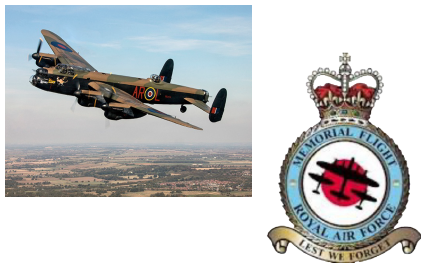
ON THIS DAY IN WORLD WAR TWO – 13TH NOVEMBER 1942
German General Paulus mounts his final assault on Stalingrad.
Papua Japanese General Harii pulls back over the Kumusi river, marking the end of the Kokoda campaign.
Dive bombers attack the Japanese battleship Hiei.
